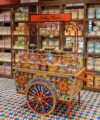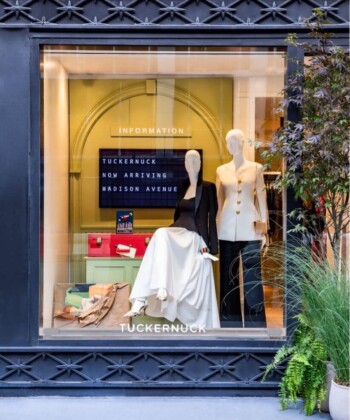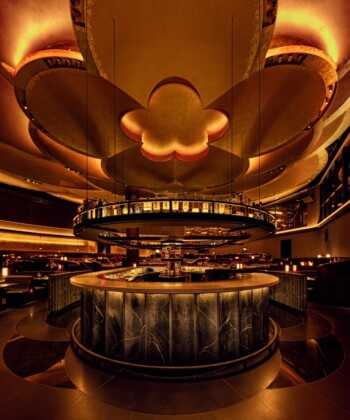Just over 60 years ago, Langston Hughes wrote of Harlem, “What happens to a dream deferred?” Would it, he asked, dry up like a raisin in the sun or fester, run, stink, crust over or, perhaps, explode? The answer, to all his questions, is yes. Harlem did all those things.
Those with a solid knowledge of Harlem’s history will have heard of the riot of 1964, of the dangerous days of Bobby Womack’s “Across 110th Street” and perhaps even of Lou Reed meeting his man on Lexington and 125th. But he would also know about the great explosion of culture of which Hughes was a shining light: the Harlem Renaissance, a cultural movement that also included writer Zora Neale Hurston, poet Countee Cullen, painter Romare Bearden and scores of others. And music-history aficionados across the globe acknowledge Harlem, along with West 52nd Street, as the cradle of New York jazz.
 John Legend performing at Lenox Lounge in 2006
John Legend performing at Lenox Lounge in 2006
But Harlem is still exploding, nightly. Along with the steady drumbeat of new restaurants, stores, condos and co-ops, farmers’ markets and craft fairs, the Harlem jazz club is swinging again, hollering back through the ages. Even as the ghost of the famed Lenox Lounge still haunts and the 2011 closure of St. Nick’s Pub stings, new venues are opening, and recent ones ring out the telltale swing with new blood.
There’s even a new musical, After Midnight, celebrating the jazz mecca the Cotton Club, by no less a grandee of the genre than Wynton Marsalis. It opens October 18, far south of the original nightclub, at the Brooks Atkinson Theatre.
Uptown, in the real Harlem, things are shaking. Arguably the new era of old Harlem was ushered in with the Red Rooster, Marcus Samuelsson‘s much-hyped Swedish-tinged new soul food restaurant on Lenox Avenue near 125th Street. When it opened in 2010, the art-filled room was a heady mix of the Harlem demimonde and downtowners whose Lincoln Town Cars idled outside. It was exciting but also felt uneasy. Was the frisson in the room cultural exchange in a hot restaurant or a slight “Aren’t we naughty?” excitement felt by the southerly trespassers? I couldn’t tell and didn’t want to stick around to find out. I went a couple of times and didn’t return for a year.
But as time dampened the place’s red-hot buzz, it has, thankfully, become what it should be: a neighborhood restaurant. When I returned recently, the real show was no longer on the ground floor but below, at Ginny’s Supper Club, an intimate live-music venue where up-and-coming stars like the chanteuse Amma Whatt and the jazz saxophonist Louis Fouche swing just like in the old days. The drinks are strong (try the Harlem Mule) and the food includes Samuelson’s signature Swedish meatballs.
Even more excitement is found a few blocks south on 118th Street. There, on the corner of Frederick Douglass Boulevard, in what used to be the Cecil Hotel, Richard Parsons, the former CEO of Time Warner and Citibank, has partnered with the immensely talented chef Alexander Smalls to open the Cecil (pictured right) and the next-door jazz club Minton’s.
Smalls, who grew up in Spartanburg, South Carolina, watching Sarah Vaughan and Duke Ellington on the Ed Sullivan Show, moved to New York City to be an opera singer and to Harlem in 1998 and has forgone stereotypes of soul food for a truly original, expertly executed cuisine. At the Cecil, an elegant corner restaurant, don’t look for the familiar. “This is the food of the African diaspora,” he told me one evening in his deep baritone. “I wanted to avoid the clichés.” There is fried chicken on the menu, sort of. But it’s cinnamon-scented guinea hen. The rest is a mix of east and west African dishes including a tremendous roasted poisson yassa and riffs on Brazilian, Indian and even Chinese dishes.

Benne Seed Tuna at the Cecil. Photo: Lucy-Schaeffer
Prawns Piri Piri at the Cecil. Photo: Lucy-Schaeffer
“I wanted to show how African cuisine has affected how the world eats,” explained Smalls. In October, Parsons and Smalls will open Minton’s, named for the legendary jazz club where Charlie Parker, Dizzy Gillespie and Thelonious Monk played.
The latest incarnation of the Cotton Club, whose progenitor is eulogized in real time by Marsalis et al, sits alone now, on a triangle of land just South of a massive construction site, huddled under an overpass. During the day, it looks forlorn. But late in the evening, after midnight, it begins to swing.
A Night in Harlem
The Cecil
206 West 118th Street
212-866-1262
thececilharlem.com
Minton’s
210 West 118th Street
(opens mid-October)
The Cotton Club
656 West 125th Street
212-663-7980
Ginny’s Supper Club
310 Lenox Ave (downstairs)
212-421-3821
ginnyssupperclub.com
Red Rooster
310 Lenox Ave
212-792-9001
redroosterharlem.com
MORE:
The Luxe Treatment of Fried Chicken
Why Everyone’s Eating Nordic Food
12 Sushi Restaurants With 12 Seats and Under









































